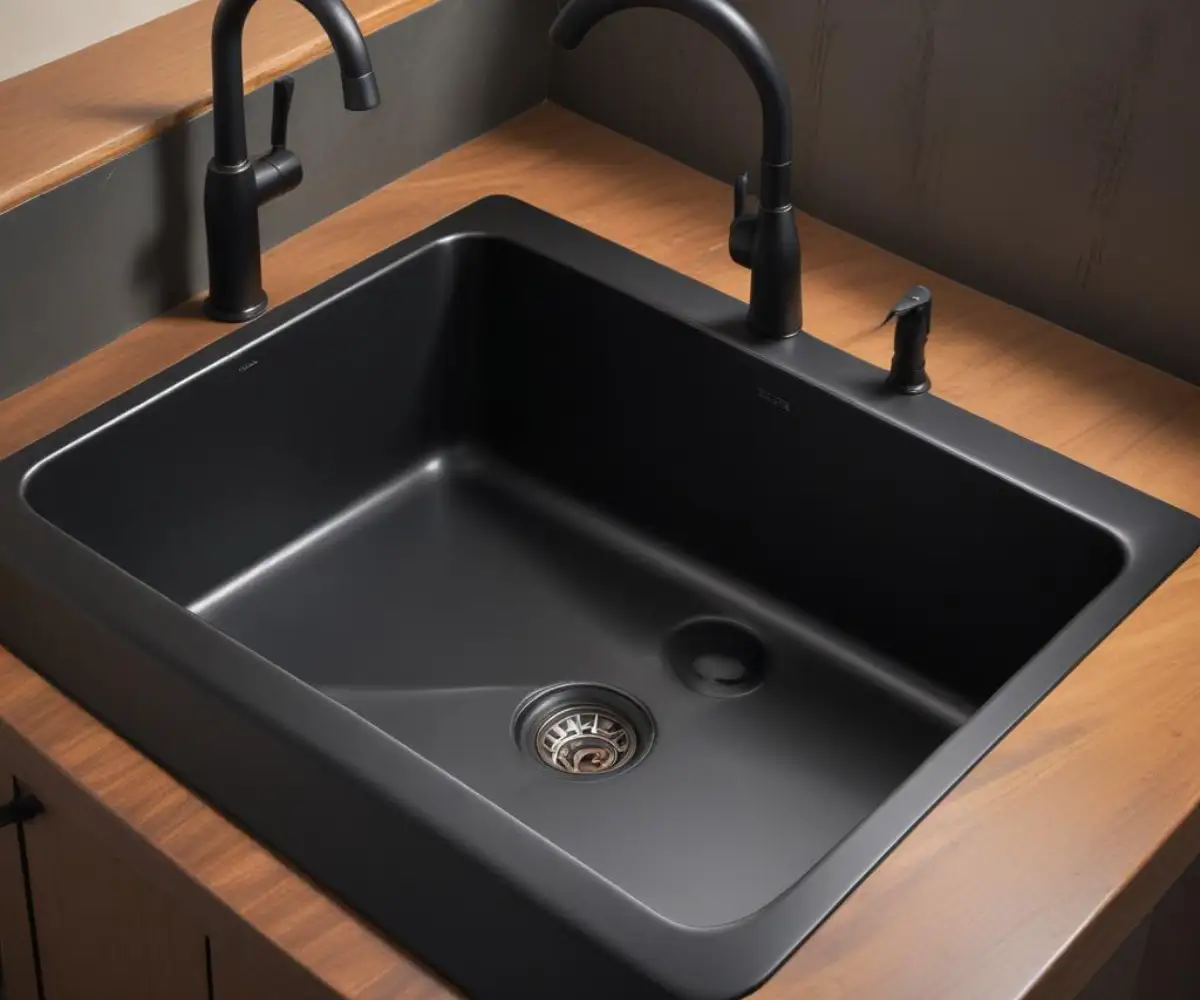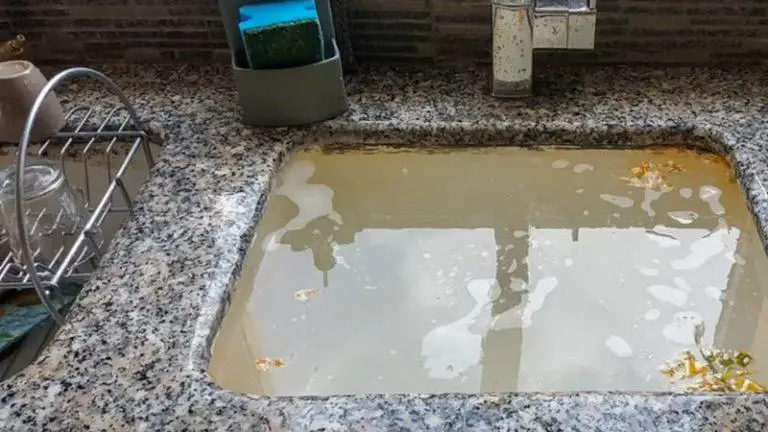Do Black Stainless Steel Sinks Scratch? The Unbelievable Truth
You’re captivated by the sleek, modern allure of a black stainless steel sink. It’s the perfect centerpiece for your dream kitchen, a bold statement of contemporary style. But a nagging question holds you back: do black stainless steel sinks scratch?
The fear is understandable. You envision a stray fork or a dropped pan leaving a glaring, silver gash on that perfect matte black surface, ruining the aesthetic you worked so hard to create. This uncertainty is the biggest hurdle for homeowners considering this trendy fixture.
You'll Learn About
The Core Problem: Understanding the Surface
The simple answer is yes, black stainless steel sinks can scratch. The key is to understand that the black color is not the material itself; it’s a finish applied to a standard stainless steel base. This colored layer is what determines the sink’s durability against scratches.
Most black stainless steel sinks are created using a process called Physical Vapor Deposition (PVD). This technique bonds a thin layer of metallic film to the stainless steel in a vacuum chamber. While PVD coatings are known for being quite durable and resistant to wear, they are not completely indestructible.
What Causes Scratches?
The primary culprits for scratches are predictable kitchen hazards. Dropping heavy pots, pans, or sharp utensils like knives and forks directly into the sink can compromise the PVD coating. Using abrasive cleaning tools, such as steel wool or harsh scouring pads, is another common cause of damage.
Over time, even the daily friction of dishes and cutlery can lead to minor abrasions. If the coating is breached, the silver stainless steel underneath will be exposed, creating a noticeable contrast against the black finish.
The Solution: Prevention and Proactive Care
While you can’t make a black stainless steel sink completely scratch-proof, you can take highly effective steps to protect its finish and keep it looking pristine for years. The solution lies in a combination of preventative measures and proper maintenance.
Think of it as protecting any high-end finish in your home; a little mindfulness goes a long way. Protecting your investment starts from day one.

Your First Line of Defense: Essential Accessories
The most crucial step in preventing scratches is to minimize direct contact between hard objects and the sink’s surface. Using a sink grid is non-negotiable. A stainless steel bottom grid elevates dishes and utensils, preventing them from scraping against the basin.
These grids are custom-fitted to your sink model and are the single most effective tool for preserving the finish. Consider it an essential part of the sink system, not an optional accessory.
Adopting a Gentle Cleaning Routine
Aggressive cleaning is the enemy of a black stainless steel finish. Never use abrasive cleaners, steel wool, or scouring pads. These will undoubtedly scratch the surface. Instead, adopt a simple, gentle daily cleaning habit.
After each use, rinse the sink thoroughly with warm water. For cleaning, use a mild dish soap and a soft cloth or sponge. Wiping the sink dry with a microfiber cloth after cleaning prevents water spots and mineral deposits, which can be particularly visible on a dark surface.
| Frequency | Task | Tools Required |
|---|---|---|
| Daily | Rinse and Wipe Dry | Water, Microfiber Cloth |
| As Needed | Gentle Cleaning | Mild Dish Soap, Soft Sponge |
| Weekly | Deep Clean (Optional) | Baking Soda & Vinegar Paste |
| Monthly | Polish and Protect | Mineral Oil, Soft Cloth |
Understanding Different Sink Materials
When considering a black sink, it’s helpful to compare it to other available materials. While black stainless steel offers a unique modern look, alternatives like granite composite provide different benefits. When comparing leading brands, it’s clear that material choice impacts long-term durability, a topic further explored in our in-depth analysis of Kraus vs Kohler.
Black granite composite sinks, for example, are known for being highly scratch-resistant because the color is uniform throughout the material. However, they can be more susceptible to chipping from heavy impacts compared to the more forgiving nature of stainless steel.
PVD Technology: The Science Behind the Finish
The Physical Vapor Deposition (PVD) coating is a game-changer for colored stainless steel. This advanced process doesn’t just paint the surface; it creates a molecular bond. This results in a finish that is significantly more resistant to tarnishing, corrosion, and scratches compared to older coating methods.
Some newer sinks feature an enhanced “nano-PVD” finish, which incorporates nanoparticles to create an even harder, more resilient, and sometimes hydrophobic (water-repellent) surface. When shopping, looking for sinks with a high-quality PVD or nano-PVD finish can offer extra peace of mind.
What to Do if Scratches Appear
Despite your best efforts, a scratch may eventually happen. The visibility of the scratch will depend on its depth and the quality of the sink’s finish. A minor surface scuff might be barely noticeable, while a deep gouge will be more apparent.
Unfortunately, repairing a scratch on a PVD-coated sink is difficult. Unlike traditional stainless steel where you can often buff out marks, doing so on a black finish can remove more of the coating and worsen the appearance. Some users report success in camouflaging minor scratches with food-safe mineral oil or specialized waxes, but this is a temporary fix.
Living with Imperfections
Many homeowners find that over time, their sink develops a unique patina of use. Minor scratches can become less noticeable as the sink settles into its role as a kitchen workhorse. Embracing this character can be part of the ownership experience.
It’s a balance between appreciating a pristine aesthetic and accepting the realities of a functional kitchen. Proper care will minimize major damage and keep the sink looking beautiful for the long haul.
Is a Black Stainless Steel Sink Right for You?
A black stainless steel sink is an excellent choice for those who love the aesthetic and are committed to a gentle maintenance routine. It makes a stunning visual impact in modern, contemporary, and industrial kitchen designs.
However, if you know your household is particularly rough on kitchen fixtures or you prefer a “toss-and-go” approach without worry, a traditional stainless steel or a black granite composite sink might be a more practical option. The decision ultimately hinges on your lifestyle and your willingness to adopt the simple care practices required to protect the finish.
Final Considerations Before You Buy
Before making your final decision, consider your home’s water quality. Hard water can leave white mineral deposits that are more visible on a black surface. Regular cleaning and drying are essential to combat this.
Also, think about the other elements in your kitchen. A black sink pairs beautifully with a wide range of countertop materials and cabinet colors, but ensure it complements your overall design vision. Just as unexpected noises in your home can be unsettling, like a tapping noise in your roof space at night, an out-of-place design element can disrupt the harmony of your kitchen.
With the right knowledge and care, the answer to “does black stainless steel sinks scratch?” doesn’t have to be a dealbreaker. By taking preventative measures like using a sink grid and following a gentle cleaning routine, you can enjoy the dramatic beauty of a black sink without constant worry. It’s a stylish, functional choice for the mindful homeowner. Just as you’d ensure proper support for flooring, such as considering if it is ok to put plywood over attic insulation, providing the right support for your sink’s finish will ensure its longevity.
Frequently Asked Questions
Do black stainless steel sinks scratch easily?
The susceptibility of a black stainless steel sink to scratching often depends on its finish. Many have a PVD (Physical Vapor Deposition) coating which is quite durable and resistant to scratches and tarnishing. However, they are not completely scratch-proof and care should be taken to avoid dropping sharp or heavy objects on the surface.
What is a PVD coating?
PVD, or Physical Vapor Deposition, is a process used to apply a thin, durable coating to stainless steel sinks. This process enhances the sink’s durability, providing resistance to corrosion, tarnishing, and scratching. The PVD coating is what gives the sink its black finish and is known for its longevity.
How can I prevent scratches on my black stainless steel sink?
To prevent scratches, it’s recommended to avoid using abrasive cleaners or tools like steel wool. Be careful when placing sharp utensils and heavy pots in the sink. Using a sink grid or a protective mat at the bottom of the sink can also provide a good layer of protection against accidental scratches.
What happens if my black stainless steel sink gets a scratch?
If a black stainless steel sink gets scratched, it can reveal the silver stainless steel underneath the black coating, making the scratch more noticeable. While the PVD coating is durable, it’s not impervious to damage from very sharp objects or harsh abrasive materials.
How should I clean a black stainless steel sink?
For regular cleaning, use a soft cloth or sponge with mild dish soap and warm water. It’s important to avoid abrasive cleaners, as these can damage the PVD coating. After cleaning, rinsing the sink thoroughly and buffing it dry with a soft cloth will help maintain its shine and prevent water spots.
Are all black sinks made of stainless steel?
No, black sinks are available in a variety of materials, including composite granite, fireclay, and porcelain. Black stainless steel with a PVD coating is a popular option known for its durability and modern aesthetic. However, other materials like black granite composite are also highly resistant to scratches and stains.

